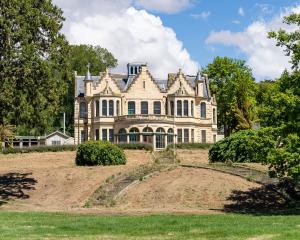
The Oamaru twins, who are in their third year at the University of Canterbury, spent their holidays investigating how primary, intermediate, and secondary school pupils travel to and from school in Waitaki, and identifying barriers they face with different active transport modes.
Through their "Let’s Get Oamaruving!" project, they wanted to find out how smaller towns and rural communities could incentivise walking, scootering, cycling and using the bus, because nationally, there was not a lot of research on how to reduce carbon emissions in the transport sector in smaller towns and communities.
With the support of their university and the Waitaki District Council, they sent a survey to all schools in Waitaki, and interviewed 26 of the respondents in person.
"It was cool to actually get out in the community and talk to people about their experiences," Breanna said.
"A lot of people are really passionate about transport ... so it was really cool getting to hear their opinions," Alyssa added.
Their research revealed 43% of school pupils usually travelled to school by car, 26% by bus and 18% walked. The main barriers to using active transport were the distance between home and school, the distance to the bus stop, and safety concerns, including a lack of safe places to cross the road, and lack of cycle lanes.
"We found that the main reason why people chose the mode that they did was whether they felt it was safe or not, and whether it was convenient to them," Breanna said.
Through the interview process, it became clear there were also underlying social norms that determined which modes of transport people used.
"For all the students around the ages of 17 to 18, who can get their licence, they’d rather drive because [it’s] more practice and also, it seems cooler, I guess, compared to walking or using the bus," Alyssa said.
Parents wanted safer road crossings and more cycle lanes, but there was no real consensus among them on how to incentivise bus travel, for those who could access it.
"In moving forward, the main solution or opportunity there is to make the bus experience much better than people currently experience it," Alyssa said.
Using Ministry of Education data, Breanna and Alyssa discovered each year, 24,953kg of carbon dioxide equivalent (CO2e) — the equivalent of flying from Christchurch to Wellington and back 164 times — was emitted by people who drove their children to school when they lived within 3km of it.
"Another interesting result was that even if parents lived less than 1km away from school, they still drove their children to school. This is because they perceived the car-dominated environment as unsafe," Breanna said.
The twins would present a report on their findings to the council, and hoped it could feed into future decision-making.
Breanna and Alyssa were passionate about the environment, and the impact changes in the transport sector could make.
"Transport is such an exciting topic, because it is responsible for producing 20% of greenhouse gases. It means that what we do in the transport sector will make a big impact," Breanna said.
"The solutions to reducing emissions in the transport sector are clear, switch from using single-passenger vehicles to shared transport, or active transport."
Alyssa and Breanna will graduate at the end of this year, and were not sure what their next steps were just yet. Breanna was interested in policy analysis, but had not ruled out further study, or travel if Covid-19 restrictions allowed, while Alyssa was interested in transport planning and urban design, and was looking at doing a master’s degree.












